After walking on the Tour de Mont Blanc in September, I was pleased to take a somewhat less arduous stroll in the Pyrenees at Vall de Núria later in the month, for a bit of relaxation after the intensive networking of the TBEX conference that I attended in Girona.
This was one of the post conference trips organised by the Costa Brava Tourism board who were keen to show us the highlights of their region, so I set off from Girona with a group of bloggers, who included my blogging friends Barbara, Simon, Laurel and Isabel with whom I shared an apartment in Girona.
This article may contain affiliate links that provide commission on purchases you make at no extra cost to you. As an Amazon Associate I earn from qualifying purchases.
The train journey up to Vall de Nuria
Our journey on the Cremellera or “Rack Railway” up to Vall de Núria was quite as interesting as our visit to the valley itself, starting at Ribes de Freser and stopping at the other stations of Ribes Enllac, Ribes Via and Queralbs to take on more passengers. The railway rises 1000 metres in altitude and the railway tracks have teeth, like a cog wheel, to stop the train slipping back down the mountain.
The local people have decided not to build a road up to the high valley, to keep it special and unspoilt, so the railway is the only way up to the valley unless you fancy a 4 hour hike up the old pilgrim’s road. The railway was completed in 1931, being built with dynamite, pickaxes and hard labour and is a tourist attraction in its own right, with a background audio commentary, playing throughout the journey in French, Spanish and English.
Luckily, having got on at the first station, we were able to find seats, but as more and more people joined the train we were surrounded by chattering families with children in buggies and a few walkers with poles stuffed down the sides of their rucksacks. Having been that hiker with those walking poles on the Tour de Mont Blanc, I could imagine how these walkers couldn’t wait to get away from the day-trippers and into the wilder and more remote corners of the Pyrenees.
Today, however, I was happy to gaze out of the window at the rocky mountain landscape where the cliff faces, which would be cascading with waterfalls in the springtime, were now bone dry following a summer without rain. As there is only one train track, we stopped halfway up the mountain at a passing place where the trains coming up and down the mountains can cross over. In the distance I could see tiny figures tracing their way along the walking trail that leads up to Vall de& Núria.
Arriving at Vall de Núria
The train passed through the final tunnel and skirted alongside the lake, depositing us at the small station beside an imposing building sitting in the bowl of the valley. At the heart of this building is the church sanctuary with the wings of the hotel, restaurant, gift shop and information centre stretching out on either side.
To the front is a grassy area in front of the lake and the whole view is framed by mountains on all sides. I was a little taken back to find such a large complex in this high valley of the Pyrenees, but apart from the riding stables, chapel and cable car station nearby there were no other buildings in the valley.
We watched an interesting film in the information centre, then took a stroll around to see what else was there. My friends Laurel, Isabel and Simon had a craving to stretch their legs on a long walk and decided to walk back down the pilgrim’s way, to meet the group back at the bottom, so Barbara and I spent most of the afternoon together exploring what the valley had to offer.
The name Núria means “place of water’ and the warm Mediterranean air rising to meet the cold air of the mountains, creates one of the highest areas of rainfall in Catalunya in this valley. The streams and rivers flow into the lake which is dammed at one end, and then continue to cascade down the mountains. They say that if you live up here, you’ll rarely get a headache, as the blue aconite that grows on the mountain slopes is a cure for migraine and the medicinal properties wash into the drinking water.
This is the high Pyrenees, close to the border with France, and you can see the path that people used during the Spanish civil war to pass from France to Spain. The black specks circling above us were vultures, gliding on the air currents and looking out for dead animals at the start of the hunting season.
On these mountain slopes, you might spot mountain deer and the marmot, as well as the mouflon, a wild sheep with curved horns which the farmers don’t like as they spread disease among the sheep and mate with them creating offspring that can’t be sold for meat.
In winter, Vall de Núria becomes a small ski resort, where people come by train from Barcelona, and these gentle slopes are ideal for families who stay in the hotel. On the Sunday in September that we were there, it seems to be where the locals head for a family day out, spreading their picnics out in front of the lake and taking their children on a horseback ride, or to feed the ducks.
Vall de Núria, a place of pilgrimage
Vall de Núria has been drawing pilgrims to the area for many centuries, seeking to emulate the simple life of San Gil (Saint Giles in English) who arrived in the area around 700AD. He lived the life of a hermit in caves around the valley, spending his time with the local shepherds, and is thought to have carved the painted image of the Virgin Mary that now sits in the chapel above the Sanctuary.
The religious symbols of Vall de Núria are the cross, which San Gil brought with him to the valley, the cooking pot which he used to cook the meals he shared with the shepherds, and the bell with which he summoned them at meal times. The 8th September is the feast of Our Lady of Núria, when the carved wooden statue is carried in a procession around the valley.
Legend has it that the carved image of the Virgin was hidden in a cave when San Gil later had to flee from persecution. A few centuries later, a pilgrim called Amadeo was called in a dream to come to Núria and build a chapel there. He searched for and finally found the carved statue which San Gil had hidden, together with a cross, bowl and bell and brought them to the chapel he built.
We visited the recently restored chapel where there is a copy of the wooden statue. The restoration had been paid for by donations from all the ladies in Spain who are called Núria which is a popular girl’s name – each of the donors having a plaque with their name on it inside the chapel.
Just inside the main Sanctuary there is a side room where women who are seeking fertility come to put their head inside a large metal pot and have the bell rung above their head, to pray for children. I remember when I was in the Quadisha Valley in Lebanon, there was a similar chapel at St Anthony’s monastery full of cooking pots brought as an offering by couples who were unable to have children, the pot being symbolic of the pregnant mother’s belly. If you were a Spanish girl named Nuria, looking to start a family quickly, this would be the perfect place to come on your honeymoon.
Walking around Vall de Núria
After lunch, Barbara and I walked on past the chapel of St Gil and the assortment of ponies, mules and ducks that were laid on for families and up to the end of the lake, where the dam across created a barrier that you could walk across. I’m not sure if we heard any water nymphs calling up from the depths of the lake to urge us to protect the natural environment for future generations, as we’d seen in the information video.
From the dammed end of the lake we could see further down the valley over the small stone arch bridge beyond which you could climb up for a viewpoint. We also took the cable car up to the Alberg station where there was a cafe with views towards the Torrent de Fontedra.
From there it was an easy walk back down, passing the pilgrimage stops and crosses along the way, part of a stations of the cross in the area, which is covered by snow in winter, but a popular walking route in summer. If you’re interested in walking, there is a useful map available from the information centre detailing all the walking routes around the valley, certainly enough to keep you going for a few days, and that’s without even leaving the valley.
Other paths go through the black pine forests and up to caves that by tradition were used by San Gil and Amadeu as well as high-points for a view over the valleys. You can also choose to hike both up and down the mountain as our friends had done, along the”Camí Vell” that was used by pilgrims to reach the Sanctuary in the Vall de Núria
If you’re in Catalunya, I highly recommend a visit to Vall de Núria as a relaxing way to spend time in the Pyrenees, which has something to offer everyone who love the mountains, from families with young children to serious walkers.
Visitor Information for Vall de Núria
More information for visiting in both summer and winter is available on the Vall de Núria Website
The Cremellara or Rack Railways starts at Ribes de Freser which can be reached by the RENFE train from Barcelona, Girona and other Spanish cities. There is free car parking at Ribes Enllac, Ribes Via and Queralbs and the price is around €22 per adult for a 1 day return train ticket plus cable car , €13 for children. The trains normally run hourly throughout the day.
Accommodation in Vall de Núria is at Hotel Vall de Nuria where there are 65 rooms and 12 apartments to choose from
What the other bloggers said about Vall de Núria
(If you have also written about Vall de Núria, I’d love you to add your link in the comments )
Barbara Wiebel – Hole in the Donut – Vall de Núria in the Spanish Pyrenees, Sanctuary then and now
Laurel Robbins – Monkeys and Mountains – Hiking the Vall de Núria, Pyrenees
Laurence Norah – Finding the Universe – Exploring the Núria Valley in the Pyrenees
Isabel Romano – Diario de a Bordo – Vall de Nuria post #TBEX trip
CC Chapman – Vall de Núria through my lens
My thanks to Costa Brava Pirineu de Girona who hosted* the visit to Vall de Núria.
* More info on my policies page
This article is originally published at Heatheronhertravels.com

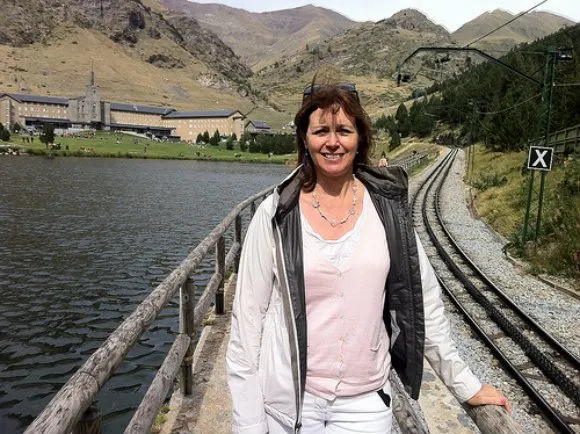
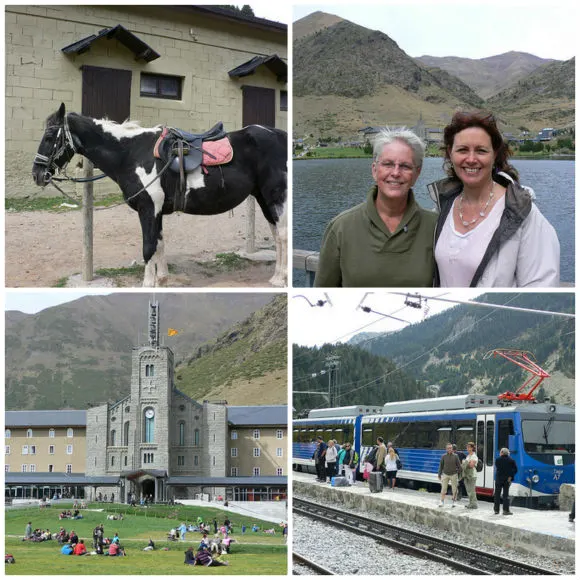
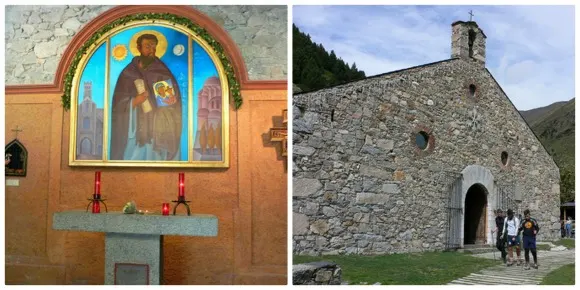
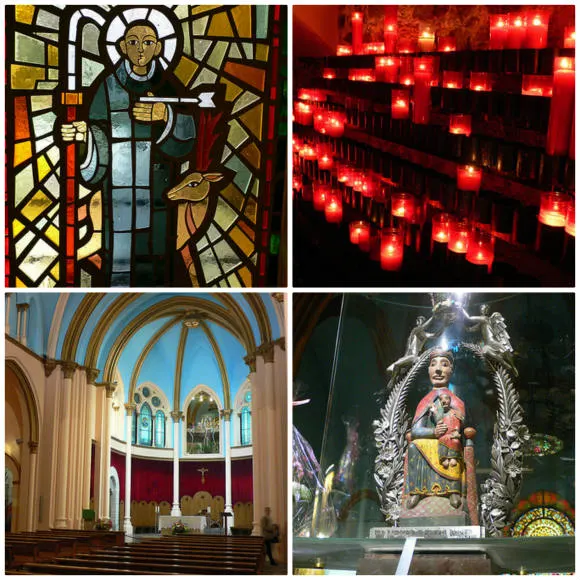
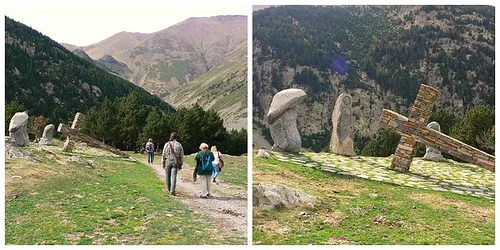

Where Heather travelled in 2012 - a year in photos | Heather on her travels
Saturday 29th of December 2012
[...] to read more? Staying in the heart of Old Town Girona with Wimdu – video A Sunday Stroll in the Pyrenees – Vall de Nuria Case study – Costa Brava Marketing campaign – podcast interview with Jaume [...]